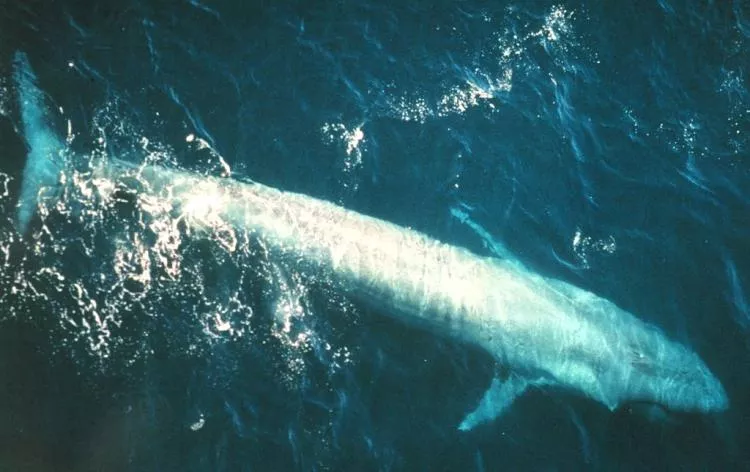Acoustic signals show blue whales go to oceanic upwellings to feed
Sound reveals that blue whales (and their prey) are drawn to oceanic upwellings.
From March to July, phytoplankton blooms emerge along Calfornia’s Central Coast, as seasonal winds push the top layer of the waters out to sea, thereby allowing the cooler, nutrient-rich waters to rise to the surface.
Many marine animals are drawn to such oceanic upwellings, which consequently turn into their feeding grounds. For instance, krill gather to feed on the abundant phytoplankton, whilst blue whales converge to feed on the krill.
Once the upwelling ceases, these marine creatures move elsewhere.
In a study involving Monterey Bay Aquarium Research Institute (MBARI) and their collaborators, researchers used whale calls to track the whales' movements and discovered that they would travel to the location of such ocean upwellings in search of food.
The study built upon research by MBARI Senior Scientist Kelly Benoit-Bird: “Previous work by the MBARI team found that when coastal upwelling was strongest, anchovies and krill formed dense swarms within upwelling plumes. Now, we’ve learnt that blue whales track these dynamic plumes, where abundant food resources are available,” said lead author John Ryan, a MBARI biological oceanographer.
Although scientists have known all along that blue whales travel to Monterey Bay during the upwelling season, this research revealed that the whales could track the upwelling process very closely, in terms of space (kilometres) and time (days to weeks).
Analysing the data
For the study, hydrophones were installed at the MBARI observatory, one in 2015 and another one in 2019. From the acoustic data in the recordings, it was possible to deduce the direction from which the whale calls originated.
According to the press release, the researchers "combined satellite and mooring data of upwelling conditions and echosounder data on krill aggregations with the acoustic tracks of foraging blue whales logged by the directional hydrophone."
“Tracking many individual wild animals simultaneously is challenging in any ecosystem. This is especially difficult in the open ocean, which is often opaque to us as human observers,” said William Oestreich, a postdoctoral fellow at MBARI. He was previously a graduate student at Stanford University’s Hopkins Marine Station.
“Integration of technologies to measure these whales’ sounds enabled this important discovery about how groups of predators find food in a dynamic ocean. We’re excited about the future discoveries we can make by eavesdropping on blue whales and other noisy ocean animals,” he added.
Findings of the study was published in the Ecology Letters journal, Vol. 25, Issue 11.



























